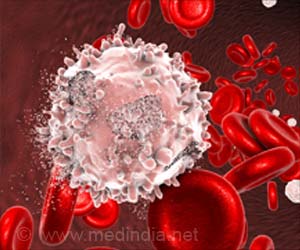High rates of women with new persistent opioid use after vaginal or cesarean delivery are found. This is especially true if they received an opioid prescription in the peripartum period. Judicious opioid prescription leads to decreased use after childbirth.

‘Women exposed to oral morphine equivalents such as opioids through prescription prior to vaginal or cesarean birth continued to use these opioids subsequent to delivery.’
Read More..




Objective To assess the association between opioid prescribing administered for vaginal or cesarean delivery and rates of new persistent opioid use among women.Read More..
Design, Setting, and Participants This retrospective cohort study used national insurance claims data for 988 036 women from a single private payer from January 1, 2008, to December 31, 2016. Participants included reproductive age, opioid-naive women with 1 year of continuous enrollment before and after delivery. For participants with multiple births, only the first birth was included.
Exposures Peripartum opioid prescription (1 week before delivery to 3 days after discharge) captured by pharmacy claims, including prescription timing and size in oral morphine equivalents. Multivariable adjusted odds ratios were estimated using regression models.
Main Outcomes and Measures Rates of new persistent opioid use, defined as pharmacy claims for 1 or more opioid prescription 4 to 90 days after discharge and 1 or more prescription 91 to 365 days after discharge among women who filled peripartum opioid prescriptions.
Results In total, 308 226 deliveries were included: 195 013 (63.3%) vaginal deliveries and 113 213 (36.7%) cesarean deliveries. Participant mean (SD) age was 31.3 (5.3) years, and 70 567 (51.0%) were white patients. Peripartum opioid prescriptions were filled by 27.0% of women with vaginal deliveries and 75.7% of women with cesarean deliveries. Among them, 1.7% of those with vaginal deliveries and 2.2% with cesarean deliveries had new persistent opioid use. By contrast, among women not receiving a peripartum opioid prescription, 0.5% with vaginal delivery and 1.0% with cesarean delivery had new persistent opioid use. From 2008 to 2016, opioid prescription fills decreased for vaginal deliveries from 26.9% to 23.8% (P < .001) and for cesarean deliveries from 75.5% to 72.6% (P < .001), and fewer women had new persistent use (vaginal delivery, from 2.2% to 1.1%; P < .001; cesarean delivery, from 2.5% to 1.3%; P < .001). The strongest modifiable factor associated with new persistent opioid use after delivery was filling an opioid prescription before delivery (adjusted odds ratio, 1.40; 95% CI, 1.05-1.87). For vaginal deliveries, receiving a prescription equal to or more than 225 oral morphine equivalents was associated with new persistent opioid use (adjusted odds ratio, 1.25; 95% CI, 1.06-1.48). Women who underwent cesarean delivery and had a hysterectomy were more likely to develop persistence (AOR, 2.75; 95% CI, 1.33-5.70), although women who underwent a nonelective (AOR, 0.97; 95% CI, 0.88-1.07) or repeat cesarean (AOR, 1.45; 95% CI, 0.93-2.28) were not more likely. For cesarean deliveries, risk factors were associated with patient attributes such as tobacco use (adjusted odds ratio, 1.82; 95% CI, 1.56-2.11), psychiatric diagnoses, history of substance use (adjusted odds ratio, 1.43; 95% CI, 1.10-1.86), and pain conditions.
Advertisement
Source-Eurekalert













